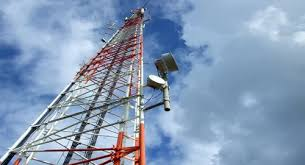Exploring the Role of English Towers for Antenna Installation
When it comes to ensuring seamless communication and connectivity, the role of English towers for antenna installation cannot be overstated. These towering structures serve as the backbone of our modern telecommunications networks, facilitating the transmission of signals for various communication purposes. In this comprehensive guide, we'll delve into the significance of English towers for antenna installation and their impact on our daily lives.
Understanding English Towers
First things first, let's define what we mean by English towers. These structures, often referred to as lattice towers or lattice masts, are tall, freestanding frameworks constructed from steel or aluminum. Their lattice design provides strength and stability, making them ideal for supporting heavy loads, including antennas, transmitters, and other communication equipment.
The Role of English Towers in Antenna Installation
1. Height and Coverage
English towers are prized for their towering height, which allows antennas to be mounted at elevated positions, maximizing coverage and signal strength. By positioning antennas at optimal heights, English towers ensure broader coverage areas, reaching more users and improving overall connectivity.
2. Structural Stability
Thanks to their robust lattice design, English towers offer unparalleled structural stability, capable of withstanding harsh weather conditions, high winds, and seismic activity. This resilience is crucial for maintaining the integrity of communication networks, even in adverse circumstances.
3. Versatility and Adaptability
English towers are highly versatile structures, capable of accommodating a wide range of antennas and communication equipment. Whether it's cellular antennas, broadcast transmitters, or microwave dishes, these towers can be customized to meet the specific needs of different communication technologies.
The Impact on Communication Networks
The deployment of English towers for antenna installation has a significant impact on communication networks, enhancing connectivity and enabling the seamless transmission of voice, data, and multimedia content. These towers serve as vital infrastructure for various sectors, including telecommunications, broadcasting, emergency services, and public safety.
Challenges and Considerations
While English towers play a crucial role in supporting communication networks, their installation and maintenance pose certain challenges. These include regulatory compliance, environmental impact assessments, land acquisition, and ongoing maintenance costs. Additionally, concerns about visual aesthetics and public perception may arise, requiring careful planning and community engagement.
Conclusion
In conclusion, English towers for antenna installation are indispensable components of modern communication networks, providing height, coverage, and structural stability for the efficient transmission of signals. From cellular networks to broadcasting systems, these towering structures support a wide range of communication technologies, enabling connectivity across vast distances. While challenges exist, the benefits of English towers outweigh the drawbacks, making them essential infrastructure for our interconnected world.

.jpg)

Comments
Post a Comment